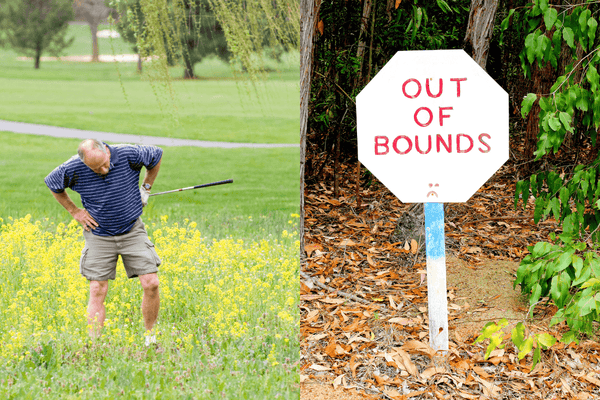Golf, a game that has captivated the hearts and minds of enthusiasts worldwide, is not merely a test of skill and technique. It is a harmonious interplay between the player, the ball, and the very landscape upon which the game is played. At the heart of this intricate dance lies the art and science of golf course design, a discipline that has evolved over centuries, shaping the golfing experience for players of all levels.
Introduction to Golf Course Design
Golf course design is the art of crafting a playing field that challenges the golfer's abilities while seamlessly blending with the natural environment. It is a delicate balance between strategy, aesthetics, and environmental stewardship, where the designer's vision and the land's inherent characteristics converge to create a truly memorable golfing experience.
The importance of golf course design cannot be overstated. It not only determines the difficulty and playability of a course but also influences the overall enjoyment and satisfaction of the golfer. A well-designed course can elevate the game to new heights, inspiring players to push the boundaries of their skills and appreciate the beauty of the sport.
Legendary Golf Course Architects
Throughout the history of golf, a select few individuals have left an indelible mark on the art of course design. These visionary architects have shaped the game, creating courses that have become icons in the golfing world.
Donald Ross
One such legendary figure is Donald Ross, a Scottish-born architect who is widely regarded as one of the most influential golf course designers of the 20th century. Ross's designs, characterized by their strategic bunkering, undulating greens, and seamless integration with the natural landscape, have stood the test of time. His most renowned works include the iconic Pinehurst No. 2 in North Carolina and the challenging Seminole Golf Club in Florida.
Alister MacKenzie
Another revered name in golf course design is Alister MacKenzie, a British physician and golf course architect. MacKenzie's designs were renowned for their aesthetic beauty, strategic complexity, and environmental sensitivity. His most famous creation, Augusta National Golf Club, home of the prestigious Masters Tournament, is a testament to his genius, blending natural elements with challenging gameplay.
Robert Trent Jones Sr.
Robert Trent Jones Sr., an American golf course architect, is known for his bold and innovative designs that pushed the boundaries of the game. His courses, characterized by dramatic bunkering, expansive water hazards, and challenging green complexes, have hosted numerous major championships and have become synonymous with the modern era of golf course design.
Pete Dye
In more recent times, the legendary Pete Dye has left an indelible mark on the golfing landscape. Dye's courses, such as Whistling Straits in Wisconsin and TPC Sawgrass in Florida, are renowned for their dramatic and visually striking features, challenging players to navigate a carefully crafted series of obstacles and hazards.
Principles of Golf Course Design
The art of golf course design is underpinned by a set of fundamental principles that guide the architect's vision. These principles, honed over centuries, serve as the foundation for creating courses that captivate and challenge players.
Strategic Routing and Hole Variety
One of the key principles of golf course design is the strategic routing of the holes, ensuring a balanced and varied playing experience. Architects carefully plan the sequence of holes, incorporating a range of lengths, directions, and playing challenges to keep the golfer engaged and constantly adapting their strategy.
Hazard Placement and Fairway Shaping
The strategic placement of hazards, such as bunkers, water features, and mounds, is crucial in golf course design. Architects meticulously position these obstacles to test the golfer's decision-making and shot-making abilities, creating a sense of risk and reward that adds to the overall excitement of the game.
Green Complexes and Putting Surfaces
The design of the greens and their surrounding features is a critical aspect of golf course architecture. Architects focus on creating undulating, multi-tiered putting surfaces that demand precision and touch from the golfer, while also ensuring that the green complexes integrate seamlessly with the overall landscape.
Aesthetics and Environmental Considerations
Golf course design is not solely about the technical aspects of the game; it also encompasses the aesthetic and environmental considerations. Architects strive to create courses that are visually stunning, harmonizing with the natural surroundings and minimizing the impact on the local ecosystem.
Case Studies: Iconic Golf Courses
Throughout the world, there are golf courses that have become iconic, serving as shining examples of the art of course design. These courses have captivated golfers and architects alike, inspiring new generations to push the boundaries of the game.
Augusta National Golf Club
Augusta National Golf Club, home of the Masters Tournament, is a prime example of golf course design excellence. Designed by Alister MacKenzie and Bobby Jones, the course is renowned for its strategic bunkering, undulating greens, and the seamless integration of its natural features, such as Amen Corner, into the overall playing experience.
Pebble Beach Golf Links
Pebble Beach Golf Links, located on the rugged California coastline, is a testament to the power of golf course design to harness the natural beauty of a site. Designed by Jack Neville and Douglas Grant, the course's dramatic ocean vistas, cliff-side fairways, and challenging greens have made it a bucket-list destination for golfers worldwide.
St. Andrews Old Course
The Old Course at St. Andrews, considered the birthplace of golf, is a timeless masterpiece of course design. Featuring wide fairways, deep bunkers, and the iconic Road Hole, the Old Course has challenged and captivated golfers for centuries, serving as a testament to the enduring principles of the game.
Pinehurst No. 2
Pinehurst No. 2, designed by Donald Ross, is a classic example of the architect's design philosophy. The course's undulating greens, strategic bunkering, and seamless integration with the natural landscape have made it a revered destination for golfers seeking a true test of their skills.
Modern Trends and Innovations
As the game of golf continues to evolve, so too does the art of course design. In recent years, several trends and innovations have emerged, shaping the future of golf course architecture.
Sustainable Design
Driven by a growing awareness of environmental stewardship, golf course architects are increasingly embracing sustainable design practices. This includes the use of native plant species, water conservation techniques, and the preservation of natural habitats, ensuring that golf courses can coexist harmoniously with their surrounding ecosystems.
Technology and Data-Driven Design
The integration of technology and data-driven analysis has revolutionized the way golf course architects approach their craft. From advanced soil and terrain mapping to sophisticated simulation software, designers can now make more informed decisions, optimizing the course layout and playing experience.
Minimalist and Naturalistic Approaches
In contrast to the grand, visually striking courses of the past, a new generation of golf course architects has embraced a more minimalist and naturalistic approach. These designers focus on enhancing the inherent characteristics of the land, creating courses that blend seamlessly with the surrounding environment and offer a more authentic golfing experience.
The Future of Golf Course Architecture
As the game of golf continues to evolve, the art of course design faces both challenges and opportunities. Architects must navigate the delicate balance between preserving the traditions of the sport and embracing the demands of the modern era.
One of the key challenges facing golf course designers is the need to adapt to changing player preferences, technological advancements, and environmental concerns. Architects must find innovative ways to create courses that are both challenging and sustainable, catering to the diverse needs and expectations of golfers.
At the same time, the future of golf course design holds immense promise. Emerging designers, armed with a deep understanding of the game's history and a commitment to innovation, are poised to push the boundaries of the craft. From the integration of cutting-edge technology to the exploration of minimalist and naturalistic approaches, the next generation of golf course architects will undoubtedly leave an indelible mark on the golfing landscape.
Conclusion: The Enduring Art of Golf Course Design
The art of golf course design is a testament to the enduring passion and creativity of those who have dedicated their lives to the game. From the legendary architects of the past to the visionary designers of the present, the evolution of golf course design has shaped the golfing experience for generations.
As we look to the future, the art of golf course design will continue to captivate and inspire, challenging golfers to push the boundaries of their skills while appreciating the beauty and complexity of the game. Whether it's the strategic placement of hazards, the sculpting of the landscape, or the harmonious integration of natural elements, the art of golf course design will remain a vital and ever-evolving aspect of the sport, ensuring that the game of golf continues to captivate and inspire players worldwide.












